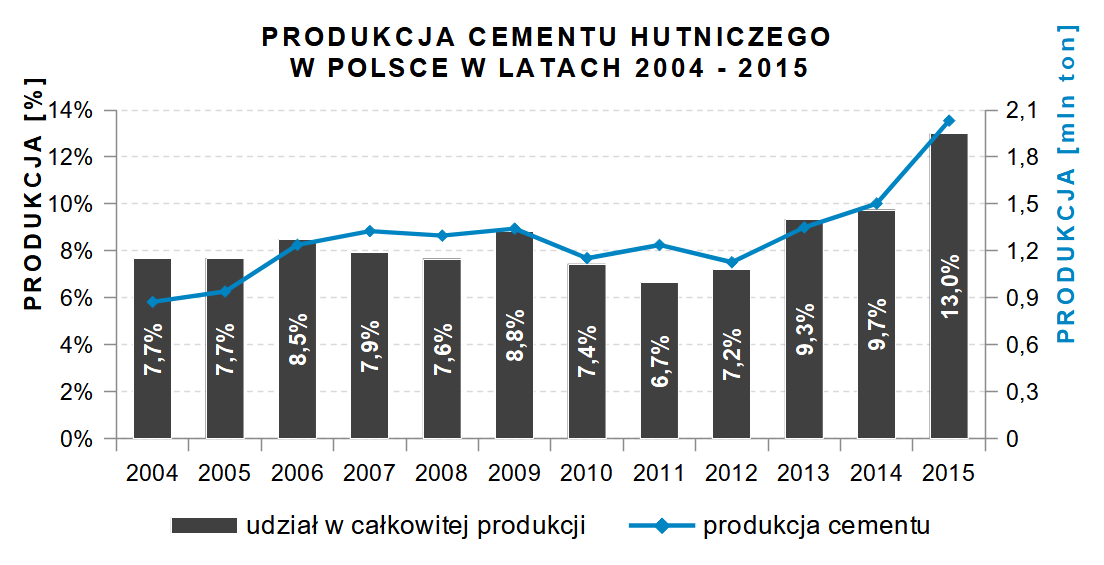

Technical consulting
Frequently Asked Questions
Can cement go bad?
The manufacturer provides a 120-day warranty for bagged cements. It should be remembered that improper storage of cement can affect its properties and usefulness. If bagged cement gets wet, it will clump together. Using clumped cement can affect the properties of the mixture and lead to a loss of concrete strength. The warranty period is calculated from the bagging date indicated on the packaging. To maintain the warranty, the following storage and handling principles should be followed:
- Bags of cement should be stacked flat, avoiding excessive loads - maximum 6 bags per stack. Larger quantities will cause less stability of the stack and the risk of bags slipping,
- Bags should be protected from damage - tearing, moisture by using additional protection such as plastic covers,
- Store in a dry place protected from precipitation (open storage - roofed areas protected from atmospheric precipitation; closed storage - rooms with tight roofing and walls),
- The surface on which the cement bags are stored must be dry and protected from moisture and contamination (accumulation of water due to atmospheric precipitation or other sources of water - moisture).
Do cement (bagged in our offer) differ in color?
It should be remembered that the color of cement is not a property defined by the standard. It mainly depends on the type of raw materials used in its production. Cements with a high content of Portland clinker, such as Rapid cement CEM I 42.5R, have a dark gray color. Cements with a content of granulated blast furnace slag are characterized by a lighter color. The greater the content of granulated blast furnace slag in the cement composition, the lighter the color of the cement. The cement characterized by the lightest color is technical cement CEM III/A 42.5N-LH/HSR/NA. Cements with fly ash have a dark gray color caused by unburned coal particles. The darkest color is characteristic of construction cement CEM II /B-M (V-LL) 32.5R.
What are special cements and what designations accompany them?
Some cements have markings indicating special properties of the cements.
Those marked as LH, HSR, and NA. The markings:
- LH indicates cements characterized by low heat of hydration (low heat of hydration and low shrinkage allow the use of cement for the construction of massive concrete structures exposed to cracking due to thermal stresses, cements used in high-temperature concreting),
- HSR - resistant to sulphates (cements recommended for the construction of concrete structures in conditions of sulphate aggression, i.e., exposed to sulphates from groundwater, seawater, industrial effluents, and artificial fertilizers).
- NA - with low alkali oxide content (used when the concrete mix may contain potentially alkali-reactive aggregate. The reaction of alkalis from the cement - reactive silica from the aggregate causes the formation of a sodium-potassium silicate gel, which, by absorbing water, increases the volume causing stresses leading to concrete destruction.
One cement may have one or all three characteristics.
What do the letters A, B, C mean in the nomenclature of cements?
Cements of different classes have additional designations: A, B, C. They indicate - apart from clinker - other main components. The letter A denotes the smallest share of additives. The higher the number, the less clinker in the cement composition and the more additives. Other main components besides clinker may include: S - granulated blast furnace slag; V - fly ash silica; W - fly ash lime; L, LL - Lime; T - burnt shale; D - silica dust; P, Q - pozzolans
The presence of the above additives does not mean that they are inferior products. Everything depends on the purposes for which we will use the cement.
What do the letter symbols R, N, L mean when included with the strength class of cement?
The designations R, N, and L indicate the early strength level of the cement:
- N - indicates normal early strength of the cement
- R - indicates high early strength of the cement
- L - indicates low early strength only for CEM III cements
The early strength "R", "N", and "L" accompanying the cement marking on the packaging is significant due to the type of work being performed. All elements that need to be disassembled more quickly or subjected to loads earlier should be made using cement marked "R". Cement marked with early strength designation "R" is also recommended when carrying out concrete work in reduced temperature periods.
What are the different classes of cement strength?
The compressive strength class is determined after 28 days of hardening. According to the applicable building standard PN-EN 197-1, we can distinguish three classes of building cement:
- 32.5 MPa
- 42.5 MPa
- 52.5 MPa
The higher the numerical designation, the higher the compressive strength.
History of Cement
Some types of natural lime (especially volcanic pozzolans) exhibit many characteristics of cement and have played its role since ancient times.
After the fall of the Roman Empire, their use was almost completely abandoned until the 18th century.
- 1756 - Englishman John Smeaton conducted many experiments during the construction of the Eddystone lighthouse on the properties of various mixtures of lime, clay, volcanic tuff, and pozzolans. He succeeded in obtaining hydraulic lime, actually a natural cement, which could even set underwater.
- 1796 - The rediscovery of Roman natural cement is usually attributed to the Englishman James Parker, who produced it from deposits discovered in 1796 on the Isle of Sheppey. Parker called it "Roman cement", hence it was called Roman cement in Poland.
- 1818 - Frenchman Louis Vicat published the results of his research on natural cement, and similar results were also achieved by, among others, Canvass White in the USA and Charles William in Great Britain. All these natural cements, despite many advantages, had a common drawback: relatively low strength, as they were fired at too low a temperature.
- 1824 - A breakthrough occurred when the English bricklayer from Leeds, Joseph Aspdin, patented a modern cement, which he named Portland cement due to the great resemblance of the concrete obtained from it to the stone from the Portland area, commonly used in England as a building material at that time. The high strength of Portland cement was the result of the appropriate technology of its production, and above all the high roasting temperature in a special kiln, reaching about 1400 degrees Celsius.
- Since 1825, Aspdin produced Portland cement in a small factory in Wakefield. Over time, his son William helped him improve the cement and then initiated its production in Germany and Belgium.
The first major structure built using Portland cement was the Thames tunnel, constructed between 1825-1843. Cement became a fully modern building material after improvements in its production process introduced around 1845 by Aspdin's compatriot, I. C. Johnson.
- From the mid-19th century - cement became widespread in Europe.
In Poland, its production was initiated by Jan Ciechanowski in Grodziec near Będzin. -
1877 - Englishman Thomas Russel Crampton invented a rotary kiln for roasting Portland cement, laying the foundations for its mass production. The first such kiln started operating in Arlesey in 1887.
Production of cement with the addition of slag began in 1863. This was first done by Emil Langen, who discovered a year earlier that slag had hydraulic properties.
In Poland, the beginnings of using slag in cement technology date back to the period of the Second Polish Republic, but a significant increase in the production of slag cements occurred only in the 1960s and 70s. The share of slag cements in the overall national production increased from about 5% in 1950 to about 44% in 15 years. The production level was very high, which was due to the availability of slag [91,92].
Production of slag cement in Poland in the years 1950-1965.
YEAR
CEMENT PRODUCTION
[thousand tons]
SHARE OF SLAG CEMENTS IN TOTAL PRODUCTION [%]
1950
2,331
5.4
1953
3,101
3.4
1956
3,856
9.8
1958
4,841
18.8
1960
6,359
21.2
1962
7,110
40.9
1964
8,326
41.5
1965
9,151
44.2
Currently, around 2 million tons of slag cement are produced annually in Poland, accounting for 13% of global production. From 2004 for the next 10 years, production remained at 7-10%, until 2015 when a significant increase occurred.

What is cement and what is it used for?
Cement is a hydraulic binder with binding properties, meaning a finely ground inorganic material (obtained from mineral raw materials such as limestone, clay, or chalk), which, when mixed with water, forms a paste that hardens through reactions and hydration processes, remaining strong and durable even underwater. The main component of cement is clinker, which is produced by burning raw materials (limestone, clay, chalk) in a rotary kiln at a temperature of 1450°C. The resulting clinker is ground with calcium sulfate (gypsum), which acts as a setting time regulator.
Cement is a fundamental material used in the construction industry, both as a component of concrete, mortar, plaster, construction chemicals, as well as for stabilization. It is used in the construction of new structures and renovation works. Proper selection of this raw material ensures the durability of the elements being constructed.

Technical consultancy
Technical consultancy at Odra Cement Plant
In response to the needs of our customers, we provide comprehensive technological and material consultancy as well as professional assistance at all stages. We guarantee reliable service in the scope of technical product testing and assistance in selecting the optimal solution for the client.